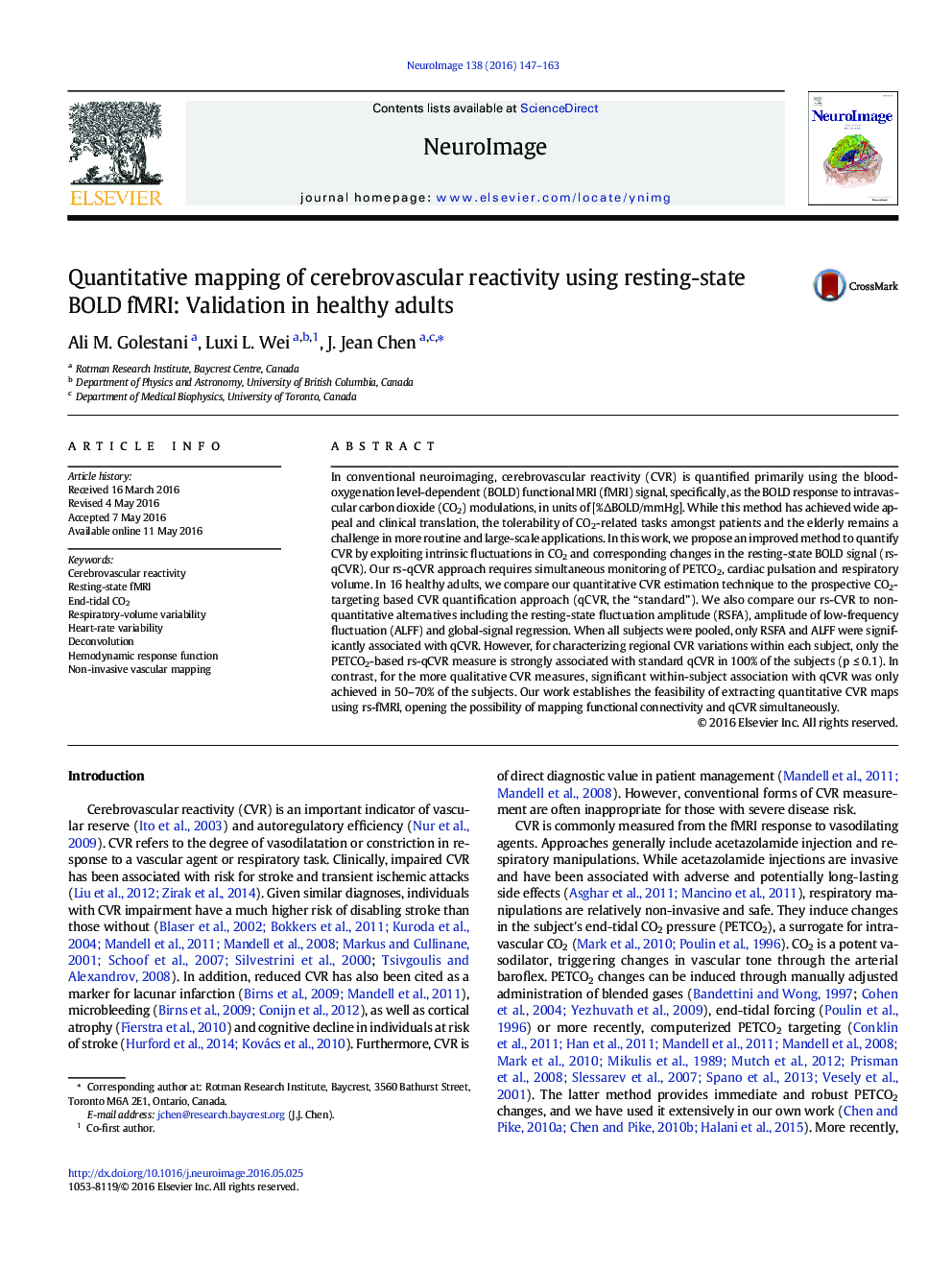| Article ID | Journal | Published Year | Pages | File Type |
|---|---|---|---|---|
| 6023508 | NeuroImage | 2016 | 17 Pages |
â¢We propose a novel method to quantify cerebrovascular reactivity (CVR) using resting-state fMRI.â¢We map CVR using intrinsic CO2 fluctuations.â¢We demonstrate good spatial agreement between our method and the CO2-inhalation method.â¢We demonstrate reasonable repeatability of our method.â¢Our method does not require any task and is well suited to large-scale patient studies.
In conventional neuroimaging, cerebrovascular reactivity (CVR) is quantified primarily using the blood-oxygenation level-dependent (BOLD) functional MRI (fMRI) signal, specifically, as the BOLD response to intravascular carbon dioxide (CO2) modulations, in units of [%ÎBOLD/mmHg]. While this method has achieved wide appeal and clinical translation, the tolerability of CO2-related tasks amongst patients and the elderly remains a challenge in more routine and large-scale applications. In this work, we propose an improved method to quantify CVR by exploiting intrinsic fluctuations in CO2 and corresponding changes in the resting-state BOLD signal (rs-qCVR). Our rs-qCVR approach requires simultaneous monitoring of PETCO2, cardiac pulsation and respiratory volume. In 16 healthy adults, we compare our quantitative CVR estimation technique to the prospective CO2-targeting based CVR quantification approach (qCVR, the “standard”). We also compare our rs-CVR to non-quantitative alternatives including the resting-state fluctuation amplitude (RSFA), amplitude of low-frequency fluctuation (ALFF) and global-signal regression. When all subjects were pooled, only RSFA and ALFF were significantly associated with qCVR. However, for characterizing regional CVR variations within each subject, only the PETCO2-based rs-qCVR measure is strongly associated with standard qCVR in 100% of the subjects (p â¤Â 0.1). In contrast, for the more qualitative CVR measures, significant within-subject association with qCVR was only achieved in 50-70% of the subjects. Our work establishes the feasibility of extracting quantitative CVR maps using rs-fMRI, opening the possibility of mapping functional connectivity and qCVR simultaneously.
